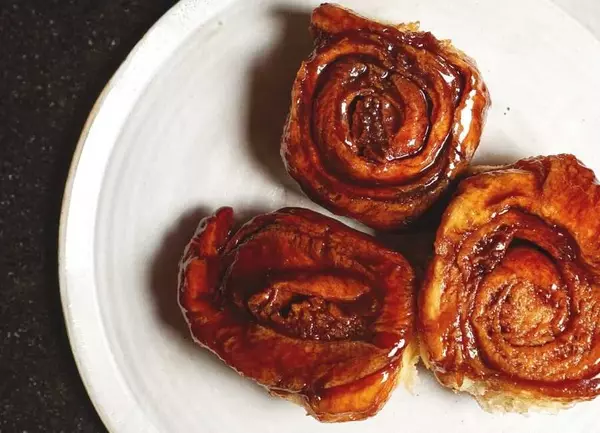A Guide to Common Backyard Birds in Florida
Florida is home to many types of birds, making it a haven for bird enthusiasts. The state’s diverse ecosystems and warm climate help attract a wide variety of bird species.

We have put together a guide that will assist you in identifying some of the most common backyard birds in the Sunshine State.
Whether you’re a resident looking to discover more about the flighty visitors in your backyard or a seasoned birdwatcher, this guide offers helpful info.

In addition, we are including some tips for maintaining a bird-friendly backyard and other great resources for learning about Florida’s most common birds.
Table of Contents
- Common Backyard Bird Identification Guide
- Northern Cardinal
- Red-bellied Woodpecker
- Downy Woodpecker
- Common Grackle
- Mourning Dove
- Carolina Chickadee
- Snowy Egret
- Great Egret
- Great Blue Heron
- Northern Mockingbird
- Red-winged Blackbird
- Sandhill Crane
- American Robin
- Blue Jay
- Florida Scrub Jay
- Ruby-throated Hummingbird
- House Sparrow
- Brown-headed Cowbird
- Yellow-rumped Warbler
- Eastern Bluebird
- Carolina Wren
- European Starling
- American Goldfinch
- Tufted Titmouse
- Baltimore Oriole
- Gray Catbird
- American Crow
- Boat-tailed Grackle
- Everglade Snail Kite
- Limpkin
- Smooth-Billed Ani
- American White Ibis
- Anhinga
- Roseate Spoonbill
- Brown Pelican
- Red-shouldered Hawk
- Osprey
- Northern Harrier
- Great Horned Owl
- Barred Owl
- Tips for Maintaining a Bird-Friendly Backyard
- More Information on Florida Birds
Common Backyard Bird Identification Guide
Northern Cardinal

Florida region(s) found: Statewide.
Description: The Northern Cardinal is an easy-to-spot bird, thanks to its red feathers. The medium-sized songbird is known for its bright red plumage in males, while females are brown with reddish tinges.
Both genders have a distinctive crest and a black mask around the face. These birds are commonly found throughout Florida and are non-migratory.
Their clear, whistling songs and metallic chip notes are a delightful addition to any backyard.
Red-bellied Woodpecker

Florida region(s) found: Statewide.
Description: The Red-bellied Woodpecker is recognized by its black and white barred back and pale belly, with a striking red cap extending from the bill to the nape.
This medium-sized woodpecker, about 9 inches long, is common in Florida’s backyards. You may hear them before you see them. These birds are known for making drumming sounds on tree trunks and branches.
Downy Woodpecker

Florida region(s) found: Statewide.
Description: The Downy Woodpecker is the smallest woodpecker in North America, featuring a black and white striped head and a white back. Males have a small red patch on the back of their heads.
These cute, small birds are about 6-7 inches long and are common across Florida backyards. Their short, sharp pik calls and rapid drumming are typical sounds in areas where they reside year-round.
Common Grackle

Florida region(s) found: Statewide.
Description: The Common Grackle is a large, iridescent blackbird with striking eyes and a long tail. Males are especially glossy, with a purple or green sheen in good light.
These birds, about 11-13 inches long, are commonly seen in large flocks across Florida.
Known for their varied and harsh bird calls, they are a noisy presence in many backyards.
Mourning Dove

Florida region(s) found: Statewide.
Description: The Mourning Dove is a common Florida bird with a soft, mournful cooing call. They have a light gray-brown body with a long, pointed tail.
About 12 inches long, these doves are often perched on telephone wires or foraging for seeds on the ground. They are non-migratory and easily attracted to backyards with bird feeders.
Carolina Chickadee

Florida region(s) found: Statewide, but less common in South Florida.
Description: The Carolina Chickadee is a tiny, non-migratory bird with a distinctive black cap and bib, white cheeks, and a soft gray body. These small birds are only about 4.5-5 inches long.
They are often flitting about in search of insects and seeds. They are common in North and Central Florida regions and have a chirpy four-note bird call.
Snowy Egret

Florida region(s) found: Statewide, especially in coastal areas and wetlands.
Description: The Snowy Egret is a small heron with all-white plumage, long black legs, and bright yellow feet.
Snowy Egrets stand about 24-27 inches tall and are home in Florida’s wetlands, estuaries, and coastal areas.
These birds are non-migratory in Florida and are have harsh, raspy calls often heard during the breeding season.
Great Egret

Florida region(s) found: Statewide, especially in wetlands.
Description: Differing from the Snowy Egret slightly in size and appearance, the Great Egret is a larger bird with a yellow bill.
Standing about 3 feet tall, these birds are also home in Florida’s wetlands and coastal regions.
Great Blue Heron

Florida region(s) found: Statewide, especially in wetlands.
Description: The Great Blue Heron is the largest heron in North America, recognizable by its blue-gray body, long legs, and sharp yellow bill.
Standing about 4.5 feet tall, these birds are at home in wetland areas. They are non-migratory and known for their slow, deliberate movements and deep, croaking calls.
Northern Mockingbird

Florida region(s) found: Statewide.
Description: Have you spotted Florida’s official state bird in your backyard? The Northern Mockingbird is the Sunshine State’s designated bird. It is a medium-sized bird, about 10 inches long, with gray plumage and a paler belly.
These birds are renowned for their ability to mimic the songs of other birds. Common throughout Florida, they are non-migratory and highly territorial, often seen perched in open areas singing loudly.
Red-winged Blackbird

Florida region(s) found: Statewide, especially in marshy areas.
Description: The Red-Winged Blackbird is a striking bird with all-black plumage and a bright red and yellow shoulder patch in males. Females, in contrast, are brown and heavily streaked.

These birds are about 7-9 inches long. They are found throughout Florida backyards year-round.
Sandhill Crane

Florida region(s) found: Statewide, especially Central and South Florida regions.
Description: Sandhill Cranes are hard to miss if they decide to grace your backyard with their presence.
This is a large bird, standing about 4 feet tall, with a gray body, red forehead, and a long neck and legs.
Sandhill Cranes are common in open fields and wetlands, though they are less common in North Florida.
They are partially migratory and are known for their bugling calls and stunning red eyes. They mate for life, so they are usually seen in pairs.
American Robin

Florida region(s) found: Statewide, especially in winter.
Description: The American Robin is a medium-sized songbird easily identified by its red-orange breast, gray upperparts, and white throat with black streaks.
About 10 inches long, these birds are even more common during the winter months. They are migratory and known for their cheerful, melodic bird calls.
Blue Jay

Florida region(s) found: Statewide.
Description: The Blue Jay is a large songbird with bright blue upperparts, a white chest and belly, and a distinctive crest. These birds, about 11-12 inches long, are common throughout Florida.
They have loud bird calls and complex social behaviors. Blue Jays are intelligent and often seen mimicking the calls of other birds.
Florida Scrub Jay

Florida region(s) found: Central Florida, Southwest Florida, Southeast Florida.
Description: The Florida Scrub Jay is a striking blue and gray bird that is found only in Florida.
About 11-12 inches long, this bird is commonly calls scrubby flatwoods home, particularly in Central and Southern Florida.
It has a blue head, wings, and tail with a gray back and underparts.
These non-migratory birds live in family groups and have harsh, scratchy bird calls.
Their flatwoods habitats are threatened due to over-development, making them a species of concern for conservationists.
Ruby-throated Hummingbird

Florida region(s) found: Statewide, especially in gardens and near nectar feeders.
Description: The Ruby-throated Hummingbird is a small, iridescent green bird. As their name suggests, males have a bright red throat. Females lack the red throat and are slightly larger.

These tiny birds are about 3.5 inches long and are common in Florida during the breeding season.
They are migratory and known for their rapid wing beats.
House Sparrow

Florida region(s) found: Statewide, especially in urban areas.
Description: The House Sparrow is a small, chunky bird with a stout bill and brown, black, and white plumage.
These birds are about 6 inches long and are common year-round in Florida’s urban areas.
Brown-headed Cowbird

Florida region(s) found: Statewide.
Description: The Brown-headed Cowbird is a small blackbird with a glossy black body and a brown head in males.
Females are dull brown all over. These birds are about 7-8 inches long.
This species practices brood parasitism, laying eggs in the nests of other bird species.
Yellow-rumped Warbler

Florida region(s) found: Statewide, especially during migration.
Description: The Yellow-rumped Warbler is a small songbird with gray upperparts, white underparts, and distinctive yellow patches on the rump, sides, and crown. They are about 5.5 inches long.
These migratory birds are more commonly seen in Florida during winter months.
In addition to their bright yellow patches, Yellow-rumped Warblers have cheerful, song-like chirps.
Eastern Bluebird

Florida region(s) found: Statewide.
Description: The Eastern Bluebird is a small, brightly colored bird with a blue back, rusty red chest, and white belly.
About 7 inches long, these birds are common in Florida’s open fields and gardens. They are non-migratory and known for their warbling bird calls.
Providing nest boxes can help attract these beautiful birds to your backyard.
Carolina Wren

Florida region(s) found: Statewide.
Description: The Carolina Wren is a small, energetic bird with a brown body, white eyebrow stripe, and an upward-facing tail.
About 5.5 inches long, these birds are year-round Florida residents.
European Starling

Florida region(s) found: Statewide.
Description: The European Starling is a medium-sized bird with iridescent black plumage speckled with white and a yellow bill. They are about 8 inches long.
These birds were brought to North America in 1890 and are now commonly found throughout the United States.
European Starlings are non-migratory and highly adaptable to urban environments.
American Goldfinch

Florida region(s) found: Statewide.
Description: The American Goldfinch is a small, mostly yellow bird with black wings. Males have a black cap and females are more olive in color. They are about 4.5-5 inches long.
These birds are common in Florida, especially during the winter months. They are migratory and known for their cheery bird calls.
Tufted Titmouse

Florida region(s) found: Statewide.
Description: The Tufted Titmouse is a cute, small gray bird with a crest, white underparts, and a rusty patch on its sides.
About 6 inches long, these birds call Florida home year-round.
These birds are related to chickadees and are often travel in mixed flocks with them.
Baltimore Oriole

Florida region(s) found: Statewide, especially during migration.
Description: The Baltimore Oriole is a striking bird with bright orange and black plumage in males, while females are more subdued with yellow-orange and gray. They are about 7-8 inches long.

They are the namesake of the Major League Baseball team of the same name.
You are more likely to find these bright birds during winter when they migrate to Florida.
They love backyards with fruit and nectar feeders.
Gray Catbird

Florida region(s) found: Statewide.
Description: The Gray Catbird is a medium-sized bird with a slate-gray body, black cap, and rusty patch under its tail.
About 8-9 inches long, these birds are more commonly spotted in Florida during winter.
These birds are often skulking in dense shrubs and thickets. They have cat-like mewing bird calls.
American Crow

Florida region(s) found: Statewide.
Description: The American Crow is one of the most well-known, easily identifiable birds in the country.
They are large, all-black birds with stout bills and fan-shaped tails. These birds are about 17-21 inches long.
American Crows are highly intelligent and common throughout Florida. Their loud, cawing calls are one of their iconic features.
Crows often travel in groups (known as a murder), foraging for food and exhibiting complex social behaviors.
Boat-tailed Grackle

Florida region(s) found: Statewide, especially in coastal areas.
Description: The Boat-tailed Grackle is a large, glossy blackbird with a long, keel-shaped tail and bright yellow eyes in males.
Females are brown and smaller. In general, they are about 16-17 inches long.

These birds are common in Florida’s coastal areas and wetlands. Non-migratory, the Boat-tailed Grackle has various harsh bird calls and are often seen in large flocks.
Everglade Snail Kite

Florida region(s) found: South Florida, especially in the Everglades.
Description: The Everglade Snail Kite is a medium-sized bird with a dark gray body, red eyes, and a sharply hooked bill adapted for feeding on apple snails, its primary food source. They are about 16-18 inches long.
These birds primarily call the wetlands of South Florida home because this is where their favorite diet of apple snails is more likely to be found.
The Everglade Snail Kite is considered endangered due to habitat loss and fluctuating apple snail populations.
Limpkin

Florida region(s) found: Statewide, especially in freshwater marshes and swamps.
Description: The Limpkin is a large, brown, wading bird with long legs and a down-curved bill. About 26 inches tall, it has white streaks on its neck and body, giving it a speckled appearance.
These birds are found almost exclusively in Florida, especially in wetlands.
The Limpkin is another bird that feeds mainly on apple snails. Unlike the Everglade Kite Snail, they are not endangered.
Limpkins have loud, piercing calls that travel great distances. Non-migratory, these birds often forage along the water’s edge.
Smooth-Billed Ani

Florida region(s) found: South Florida, especially in open areas and shrubby habitats.
Description: The Smooth-Billed Ani is a medium-sized, black bird with a long tail and a distinctive, smooth, curved bill.
It is about 13-14 inches long and makes it home in open fields and brushy areas in South Florida.
These birds are non-migratory and are a sociable species, often seen in small flocks.
Their calls are a series of high-pitched, whining notes.
American White Ibis

Florida region(s) found: Statewide, especially in wetlands, coastal areas, and suburban areas.
Description: The American White Ibis is a medium-sized wading bird with white plumage, a pink face, and a long, curved red bill. They are about 22-27 inches long.
Their graceful flight and social behavior make them a familiar sight in many Florida landscapes.
You may find flocks of them in your backyard after it rains, foraging for insects, frogs, and other food sources.
Anhinga

Florida region(s) found: Statewide, especially in freshwater wetlands.
Description: The Anhinga is a large black water bird with silver wing patches. About 35 inches long, it makes its home in Florida’s wetlands.
The Anhinga uses its sharp-pointed bill to spear fish. It is also known as the “Snakebird” for its habit of swimming with only its neck above water.
Non-migratory, these birds have a habit of spreading their wings to dry in the sun. Their calls are a series of low, croaking sounds. They are often perched on branches or logs near water.
Roseate Spoonbill

Florida region(s) found: South Florida, especially in coastal wetlands and mangroves.
Description: If you’re wondering about the large wading bird with striking pink plumage and a distinctive spoon-shaped bill, that’s a Roseate Spoonbill.
About 28-34 inches long, it makes its home in the coastal areas and wetlands of South Florida. These birds use their unique bills to sift through mud for crustaceans and small fish.
Non-migratory, the Roseate Spoonbill has a low, guttural call. Their vibrant color and elegant flight make them a favorite among bird watchers and photographers.
Brown Pelican

Florida region(s) found: Statewide, especially in coastal areas and bays.
Description: The Brown Pelican is a large, coastal bird with a distinctive long bill and a large throat pouch. About 48 inches long, it makes its home near coastal towns around Florida.
These non-migratory birds are known for their dramatic plunge-diving to catch fish. Their calls are generally low and gruff.
Brown pelicans are often flying in formation just above the water’s surface or resting on piers and boats.
Red-shouldered Hawk

Florida region(s) found: Statewide, especially in wooded areas and near wetlands.
Description: The Red-shouldered Hawk is a medium-sized bird with reddish-brown shoulders, a barred tail, and a pale underbelly with reddish barring.
It is about 17-24 inches long and makes it home in forests and wetlands.
Known for their loud, distinctive calls, Red-Shouldered Hawks are non-migratory in Florida.
They are often perched in trees or soaring in search of small mammals and amphibians.
Osprey

Florida region(s) found: Statewide, especially near large bodies of water.
Description: The Osprey is a large raptor with a white underbelly, dark brown upperparts, and a distinctive dark eye stripe.
They are about 21-24 inches long and often found near lakes, rivers, and coastal areas.
The Osprey is also known as the “fish hawk,” due to its diving ability to catch fish.
These birds are non-migratory in Florida. Their calls are a series of high-pitched whistles. They are often near water or soaring overhead.
Northern Harrier

Florida region(s) found: Statewide, especially in open fields and marshes.
Description: The Northern Harrier is a medium-sized bird with white plumage, long black-tipped wings, and a long tail.
About 18-20 inches long, it makes its home in Florida’s open fields and marshes during winter.
Harriers are migratory, spending their breeding seasons in Canada and the northern United States.
They are birds of prey, often seen hunting for small mammals and birds by flying close to the ground.
Great Horned Owl

Florida region(s) found: Statewide.
Description: The Great Horned Owl is one of the most common owls in the United States.
This large, powerful species of owl is about 18-25 inches tall and has prominent ear tufts, or “horns,” and striking yellow eyes.
It makes its home throughout the state in various habitats, including open woods, swamps, and urban areas.
Known for their deep, hooting calls, these owls are formidable hunters, preying on a wide range of animals, from rodents to birds.
Non-migratory, Great Horned Owls are highly adaptable and often nest in tree cavities, abandoned nests, or man-made structures.
Barred Owl

Florida region(s) found: Statewide, especially in wooded areas and swamps.
Description: Another frequently sighted owl in Florida is the Barred Owl. It is a medium-sized owl with a round head, no ear tufts, and dark eyes.
It is about 16-25 inches tall and has a mottled brown and white plumage with distinctive horizontal bars on its chest and vertical streaks on its belly.
The Barred Owl is known for its distinctive hooting call.
Less aggressive than the Great Horned Owl, these birds are more likely to be spotted in backyards.
Tips for Maintaining a Bird-Friendly Backyard

Creating a bird-friendly backyard is not only beneficial for the birds but also provides increased opportunities for bird sightings.
Here are some tips to help you attract and support backyard birds of Florida:
- Install bird feeders: While the ethics of using bird feeders has been debated, there is no hard evidence pointing toward it being a harmful addition to your backyard. Choose between platform feeders or tube feeders, or get creative with DIY options. (Bonus tip: use bird feeders with a variety of seeds, nuts, and suet to attract a diverse range of birds.)

- Provide shelter and nesting sites: Birds need safe places to rest and nest. Consider installing birdhouses in out-of-the-way areas of your backyard.
- Avoid pesticides: Pesticides can be harmful to birds and their food sources. Opt for natural pest control methods to keep your garden bird-friendly.
- Provide fresh water sources: Birds need fresh water for drinking and bathing. Install birdbaths or small ponds and ensure the water is clean and regularly refreshed.
- Plant native vegetation: Native plants provide natural food sources and shelter. Consider planting shrubs, trees, and flowers that are native to Florida.

Some great organizations in Florida offer extensive information on bird populations, potential threats, conservation efforts, and ways to get involved in birdwatching and preservation activities.
More Information on Florida Birds
Florida Fish and Wildlife Conservation Commission

The Florida Fish and Wildlife Conservation Commission website is a great birdwatching resource that has compiled information like bird sounds, migration patterns, and more.
For more information, visit the official Florida Fish and Wildlife Conservation Commission website.
Audubon Florida

Audubon Florida answers all your birding questions – from wildlife photography ethics to what to do if you spot a banded bird.
For more information, visit the official Audubon Florida website.
Great Florida Birding and Wildlife Trail

The Great Florida Birding and Wildlife Trail spans across the state.
Check out the website’s interactive map, which allows you to pinpoint which areas in the state you may spot specific species of birds.
For more information, visit the official Florida Birding Trail website.
Seaside Bird Sanctuary

Seaside Seabird Sanctuary is a nonprofit 501c organization in Indian Shores, FL, that rescues, rehabilitates, and releases wild seabirds and other sea life. They are also home to hundreds of resident birds.
Unfortunately, the facility was destroyed by Hurricane Helene, causing over $300,000 in damage. There is a GoFundMe and a Seaside4TheBirds Wish List of items they desperately need. Please give you can!

Birds are returning home after being kept at other bird rescue organizations around the state. Follow the Seaside Seabird Sanctuary Facebook page for the latest updates.
If you are in the area and are looking for holiday presents, visit their Gift Shop. They are open Tuesday through Saturday, 9 AM to 4 PM, and Sunday & Monday, 10 AM to 2 PM.
Seaside Seabird Sanctuary Address: 18328 Gulf Blvd., Indian Shores, FL 33785
If you enjoyed this article about common backyard birds in Florida and are looking for a few other recommendations, check out these suggestions:
- Best Places to Retire in Florida
- Best Places to Find Sand Dollars in Florida
- Unique Animal Encounters in Florida
- Make Every Day Earth Day in Florida with 24 Sustainable Initiatives
The post A Guide to Common Backyard Birds in Florida appeared first on Authentic Florida.
Categories
Recent Posts













